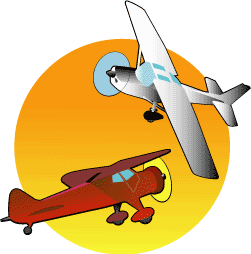 |
||||||||
| Issue Number 271 |
March
2002
|
|||||||
|
P.O. Box 189, Moffett Field, CA 94035-0189 |
||||||||
|
|
||||||||
 |
||||||||
| Issue Number 271 |
March
2002
|
|||||||
|
P.O. Box 189, Moffett Field, CA 94035-0189 |
||||||||
|
|
||||||||
ASRS To Conduct Security Callback Study
 In
March 2002 ASRS will launch a "structured callback" telephone
survey study of airport and aircraft-related security events reported
to the program. The survey study is part of a NASA Ames Research Center
effort to assist in national security improvements currently being
proposed and implemented.
In
March 2002 ASRS will launch a "structured callback" telephone
survey study of airport and aircraft-related security events reported
to the program. The survey study is part of a NASA Ames Research Center
effort to assist in national security improvements currently being
proposed and implemented.
An ASRS structured callback study involves telephone interviews conducted by ASRS analysts with individuals who have submitted a relevant incident report to the program. The information collected is treated confidentially, and all details that can identify an individual or organization are removed prior to data analysis.
The ASRS analysts that will conduct the surveys are highly experienced pilots and air traffic controllers. Their years of experience are measured in decades and cover the full spectrum of aviation activity, including air carrier, military, general aviation, and air traffic control.
Focus of the Security Study
The ASRS security study will focus on security-related events that occur at an airport or on board an aircraft. ASRS is interested in hearing from air carrier and general aviation pilots, air traffic controllers, flight attendants, maintenance personnel, and others who have directly experienced or observed security-related incidents that have occurred within the past 90 days.
The goal of the study is to identify current gaps in aviation security measures, as well as potential risks and vulnerabilities to the national aviation system. NASA will evaluate the survey data for its contribution to security and safety improvements.
How the Interviews Work
Aviation system users and FAA personnel may participate in the security survey by reporting relevant incidents on a NASA reporting form obtained from an air carrier or other flight organization, a Flight Service Station, or from the ASRS web site: http://asrs.arc.nasa.gov/report/electronic.html.
ASRS will contact incident reporters to request their participation in the study and to set up interview appointments. The telephone surveys will last an average 30 to 45 minutes. Reporters will receive their ID strips back as soon as the interview is complete. No record of survey participants' identity will be retained by ASRS.
ASRS Survey Contacts
Several aviation organizations representing the potential reporter groups have been contacted and asked to support and promote this ASRS study to their members. These organizations include:
We encourage all who have experienced security-related events in the past 90 days, or who have security concerns, to file your report with ASRS as soon as possible.
Sample Security Concern
ASRS received the following report from an air carrier Captain describing a security concern about meal service personnel access to aircraft. The incident involved a catering truck driver who arrived at a boarding aircraft without security seals and padlocks already in place on the catering vehicle.
More on Non-Tower Airport Operations
Training for airports without operating Control Towers emphasizes the use of proper radio communication procedures and see-and-avoid practices. Both are crucial for safe operation into uncontrolled fields. ASRS reports can add another dimension of understanding on these subjects, as illustrated by several recent incident reports.
Wrong Frequency, Wrong Runway
An instructor and student were conducting proficiency training at a non-Tower field when an unplanned maneuver collision avoidance became necessary:
The pilot of the twin aircraft delivered a double whammy to this unsuspecting instructor and student by using the wrong frequency and wrong runway. Single runway-opposite direction operations are commonly encountered at non-Tower airports, even on occasions (as in this incident) when wind conditions do not favor this use pattern. Pilots who develop an "expectation" of opposite direction traffic on the same runway, and who exercise extra vigilance during takeoffs and landings, will be a step ahead in avoiding conflict situations.
Section 4-1-9 of the Aeronautical Information Manual provides a detailed summary of recommended communications procedures at non-Tower airports, and where to look up the various common frequencies used.
 Air
Brush
Air
Brush
ASRS received reports from two pilots involved in a mid-air collision at a non-Tower airport. Fortunately, the mid-air resulted only in minor damage to each aircraft and no injury to the involved pilots. Accordingly, it was not categorized by the NTSB as an accident. This incident involved several elements often seen in conflict events at non-Tower fields:
| ASRS Recently Issued Alerts On... |
|---|
| B737-400 wrong part installation |
| CL65 uncommanded engine rollback during climb |
| F100 high energy ignition unit malfunction/shock hazard |
| An airport's dim Precision Approach Path Indicator lights |
| ATC takeoff clearance issued for an occupied runway |
|
January
2002 Report Intake
|
|
|---|---|
| Air Carrier/Air Taxi Pilots |
1,936
|
| General Aviation Pilots |
648
|
| Controllers |
27
|
| Cabin/Mechanics/Military/Other |
101
|
| TOTAL |
2,712
|